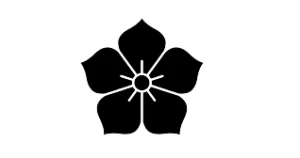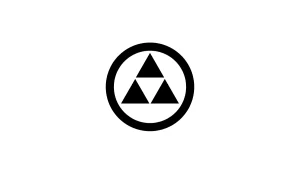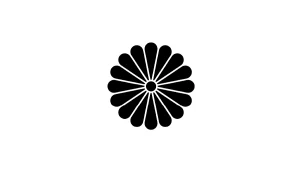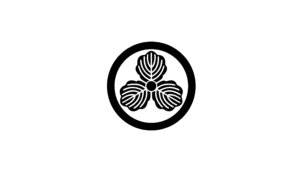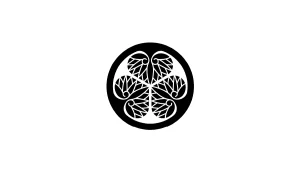Maruni Gosan-no-Kiri — Japanese Family Crest (Kamon)

Overview
Maruni Gosan-no-Kiri places a stylised paulownia (kiri) branch—three leaves and three clusters of blossoms—inside a bold circle. The classic 5-3 bloom layout projects dignity and balanced symmetry.
Historical Significance
Originally a court motif, the kiri crest became the emblem of the imperial regent Kampaku in the Muromachi period. Toyotomi Hideyoshi popularised the 5-3 version; later, the Meiji government adopted variant paulownia crests for official seals, making it one of Japan’s state symbols.
Symbolism
The paulownia grows straight and tall, so its leaves denote rising status and prosperity. The triple blossom clusters signify benevolent governance spreading in all directions, while the encircling ring adds protection and unity—altogether proclaiming authority tempered by virtue.
Modern Usage
Today Maruni Gosan-no-Kiri appears on government documents, police badges, kimono crests and sake labels. Its bold yet intricate outline is a favourite for lacquerware and metal fittings; at Shodocafe7557, guests often choose it for tote-bag prints or hanko seals.
Q &A
- What does “5-3” mean in the crest’s name?
-
It refers to five blossoms in the top cluster and three in each side cluster.
- Which historical figure popularised this crest?
-
Toyotomi Hideyoshi used the 5-3 kiri extensively on armour, castles and coins.
- Can Shodocafe7557 print this crest on my tote bag?
-
Yes.
Customizable Tote Bag with Japanese Family Crests (Kamon) and Kanji
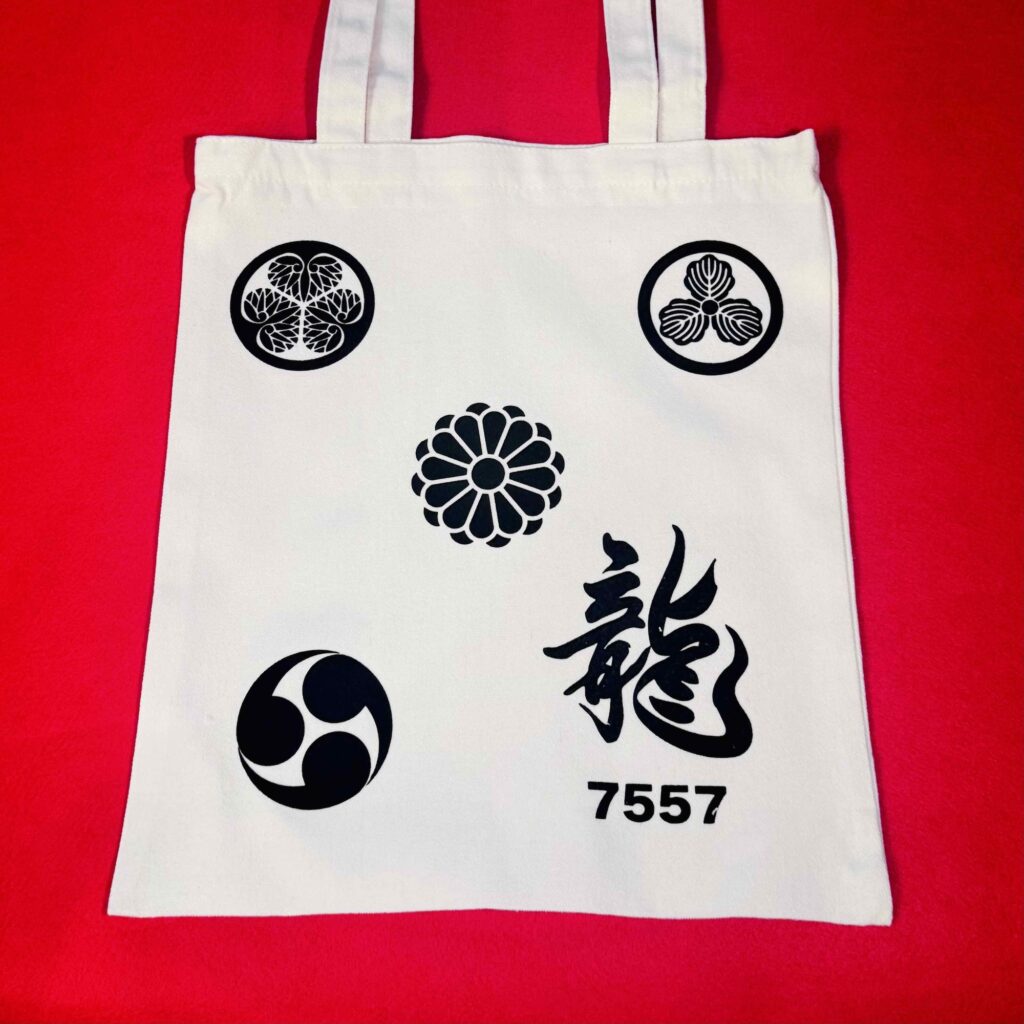
We sell customizable tote bags featuring Japanese family crests (kamon) and kanji. Choose your favorite crest and characters—such as ‘龍’—and we’ll craft a unique, made-in-Tokyo piece. Perfect as a cultural gift or travel keepsake. Lead time varies by design.
Want to explore more Japanese family crests?
Check out the links below to learn about the meanings and origins of other representative kamon.
We also offer custom tote bags featuring your favorite crest—feel free to contact us for orders or inquiries!
Which is your favorite family crest?
Japanese family crest

